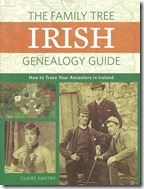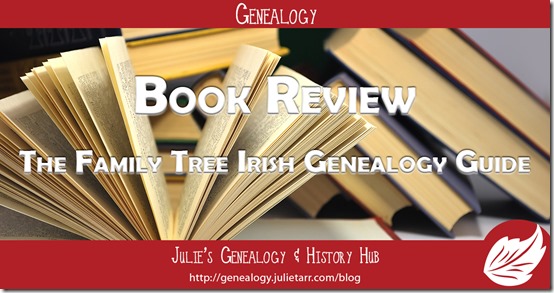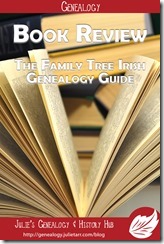 Title: The Family Tree Irish Genealogy Guide
Title: The Family Tree Irish Genealogy Guide
Author: Claire Santry
Format: Paperback, Kindle
Published: 2017
My Rating: ![]()
![]()
![]()
![]()
The following review first appeared in the Federation of Genealogical Societies FORUM magazine (Summer 2018); reprinted with permission.
The Family Tree Irish Genealogy Guide provides a wealth of information for tracing Irish roots. Claire Santry does an excellent job of outlining tried-and-true methods for pinpointing an ancestor’s townland and how to proceed with researching Irish records.
The book is organized into three parts. In the first part, readers will learn about Irish culture, immigration, and basic research steps applicable to all genealogy projects, as well as tips for identifying an ancestor’s townland and religion, both of which are necessary when using Irish records. While basic in nature, I particularly found the discussion on immigration enlightening, as it gave me a research idea for an Irish ancestor that has eluded me for nearly ten years.
Part 2 makes up the bulk of the book. Three of the nine chapters include a brief history of Ireland (with a handy graphical timeline), a discussion of geography and administrative districts (key to locating records), and an overview of given names and surnames, including naming patterns.
The remaining six chapters in part 2 discuss Irish records in great detail. For each record type, Santry provides necessary information about the records, such as why they were created and where they can be found. She also provides search strategies and tips for using the records, and when applicable, places where indexes, transcripts, and/or digital images can be found. The chapter on censuses is valuable because it introduces readers to what is and is not available. Because only a small fragment of nineteenth-century censuses survive, census substitutes are critical and Santry provides several island-wide options. In the chapter on land and property, Santry’s discussion of Griffith’s Valuation is essential because it explains how to use the resource and how to decipher the information it contains.
The third part wraps everything together and offers additional tips. Two short case studies are presented that demonstrate some of the strategies and techniques described in the book. Among the six appendixes, most of which are lists of resources, there is one dedicated to understanding Latin, which is primarily used in Catholic church records.
Those with Irish roots will no doubt find this guide a valuable addition to their library.



Share your thoughts...